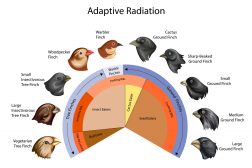Definition
noun
A theory on emotion formulated by Walter Cannon in 1929 which states that the diencephalon, consisting of hypothalamus and thalamus, serves as the center of emotional expression whereas the cerebral cortex is the center of emotional experience. According to this theory, nerve impulses from sensory nerves reach and trigger the thalamus to interpret and send impulses to the cerebral cortex so that the emotion is experienced. Simultaneously, it also sends impulses to the autonomic system to cause physiological changes in the viscera and muscles so that the behaviour specific to this emotion is expressed.
Supplement
Historically, this theory is formulated by Walter Cannon as an argument to the theory of William James on emotion (called Body Reaction theory).
The fight-or-flight response in animals is implicated in this theory where it assumes that an animal facing a stimulus of threat experiences independent but simultaneous reactions, such as the psychological awareness of the emotion in the brain, and the physiological changes triggered by the autonomic nervous system, (which altogether preparing the animal to respond – either to fight or flee – in threatening situations).
Synonyms:
- Emergency theory
- Cannon’s theory
Compare: Body Reaction theory
See also: fight-or-flight response







